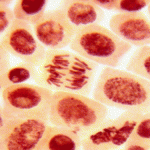Nature’s most potent poisons attack the tiniest building blocks of our bodies: the cells. Poisons can effect as little as one molecule – but this has fatal consequences. Even the slightest molecular change in our cells can kill. But could you recognise an ordinary white powder as a molecular poison? And what would be your fate if you didn’t?
The deadliest kind of poison is one that strikes without warning, hidden inside something normal or everday. On 29 September 1982, 12-year-old Mary Kellerman of Elk Grove in Illionois, USA, complained about a sore throat. Her parents gave her a Tylenol pill (a US version of Panadol) to help – the same medicine the whole family had been using for years. A few minutes later, they found their daughter collapsed on the bathroom floor. In the panic that followed, nobody considered the harmless painkiller could have been poisoned. But poor Mary Kellerman was dead, before she even reached the hospital.
The American schoolgirl had been poisoned with cyanide, which had been injected into pills distributed to pharmacies in Illinois. Mary Kellerman, and ordinary girl, was murdered with an infamous poison, a killer used throughout history one everyone from kings to Cold War defectors.
Cells have to give up
Most poisons attack the body’s tiniest, yet most important building blocks: the cells.
The body contains trillions of cells, which control everything we do. But they are so delicate, even the tinest chemical change inside them can be fatal. This is essentially how poisons kill us.
Most of our cells have a nucleus surrounded by a number of other structures and encased in a membrane. The nucleus contains our DNA, and controls the cell. The membrane, on the other hand, contains a number of proteins, which open and close channels in the cell which allow other molecules and ions to flow in and out. This flow of molecules and ions is the foundation of our body’s functionality. Poisons disrupt this flow, which in turn prevents our cells from expelling waste, maintaing the right energy levels, or dividing. Too much disruption causes tissue and organ damage… and even death.
The Perfect Murder
Because each different poison disrupts the body in a slightly different way, they have very different effects. Some seem harmless in the beginning. The victims may walk about for weeks without knowing that that they have been poisoned. That was the case with former KGB agent Alexander Livinenko, who died of polonium poisoning in November 2006 after unknowingly drinking 10 microgrammes of the poison in a cup of tea. The Russian experienced severe stomach cramps in the days after he was first poisoned, but he had no idea that they had been caused by polonium moving through the blood-stream to his organs. First, he lost his hair as the poison disrupted his follicles.
Eventually, his heart collapsed. Litvinenko died three weeks after having been poisoned. But poison attacks are not a thing of the past. This was confirmed as recently as in April 2013, when White House security staff found a letter filled with ricin addressed to President Barack Obama. In a worst-case scenario, the poison could have killed the president within a few days.
Poison as a cure?
There could be an upside to poison’s ability to attack our cells at a molecular level. Because ricin is so potent, scientists try to tame the poison, allowing them to utilise ricin’s ability to damage cell protein production for killing cancer cells – without killing the patient. Others aim to use ricin in mucosa vaccines – preventive treatment aimed at the mucosa of nose, mouth, and rectum, where the majority of viruses enter the body.
An advanced ricin defence in the mucosa will provide us with an efficient weapon against diseases such as mutated flu and tuberculosis. So far, doctors have not been fully able to tame the molecules of murder, which unscrupulous people sometimes use to commit a crime.
Mary Kellerman from Illionois was not the only victim of the infected painkillers. A total of seven Americans fell victim to the cyanide murderer, before the American authorities managed to issue a warning concerning infected Tylenol pills. The murder mystery was never solved.
Cells have to give up
Most poisons attack the body’s tiniest, yet most important building blocks: the cells.
Nature’s most potent poisons attack the tiniest building blocks of our bodies: the cells. Poisons can effect as little as one molecule – but this has fatal consequences. Even the slightest molecular change in our cells can kill. But could you recognise an ordinary white powder as a molecular poison? And what would be your fate if you didn’t?
Silver liquid metal of death
The chemical symbol of mercury, Hg, refers to the metal’s Latin name, hydrargyrum – it means ”water silver”.
Mercury is one of nature’s most slowly-working poisons, but also one of the most lethal. Worst of all, symptoms don’t appear until the heavy metal has affected the body’s organs so badly that recovery is almost impossible. Forensic pathologists consider mercury the ”cancer” of poisons. The secret behind the fatality is to be found in the microscopic damage, which oxygen atoms inflict on our organs every time we breathe. Normally, antioxidants repair the damage, so the organs can keep on working. Mercury attacks an enzyme in the body which is responsible for the production of antioxidants. The large organs of the body such as the heart, kidneys, and brain are all major oxygen consumers. In the case of poisoning, the only cure is treatment with substances which make the metal soluble in water, allowing the kidneys to filter out the mercury.
Rusting to Death
Mercury reduces the body’s ability to repair the damage caused by the oxygen we breathe. Result: cell regeneration is disrupted, and organ failure eventually follows.
Brain
The most oxygen-requiring organ is affected first. The first symptom is a slight headache, which develops into amnesia and continous eadache.
Lungs
Severe mercury poisoning affects the nervous system and will destroy the lungs over time.
Kidneys
As the poisoning gradually intensifies, the kidneys will have difficulties clearing the body of waste substances. They finally fail, and the victim dies.
Polonium
fatal dose
0.1 microgramme. Death occurs after a few weeks. Poisoning symptoms, Hair shedding, nose-bleeding, gum bleeding, vomiting, fever, organ failure.
Harmless particles killed agent
Unlike others, the radioactive particles of Polonium-210 cannot penetrate human skin. But if the poison enters the body – e.g. via food – it is extremely lethal. The radioactive substance quickly binds to the spleen, the kidneys, and the liver, which are bombarded with the short radioactive waves, which polonium emits as it decays. The first symptoms occur in the fast-growing hair cells of the body, and the victims thus shed their hair. Subsequently, the polonium causes the liver, milt, and heart to fail.
Sweet-smelling killer
Aconitine – fatal dose 2 mg. Death occurs in less than an hour. Poisoning symptoms Stomach ache, vomiting, breathing difficulties, numb limbs,
breathing paralysis, heart failure.Attractive,
Europe’s most poisonous flower, aconitum napellus, contains the aconitine neurotoxin, which paralyses breathing. Aconitine was previously used on arrows by Japanese and Nepalese hunters, and as recently as 2004, Canadian actor Andre Noble died after eating aconitum by accident, while out bushwalking.
Killer cramps
Strychnine – fatal dose 100 mg poisoning symptoms Vomiting, violent convulsions, facial spasms, foam at the mouth, wide eyes, unconsciousness, suffocation.
Killer cramps – Strychnine is carried through the body via red blood cells and – unlike other substances – it only binds very slightly to blood proteins. So it can leave the blood stream easily, and enter the nervous system, where it attacks the neurotransmitters, which control our nerve impulses. The result is spasms, which affect heartrate and breathing.
Cyanide fatal dose 50 mg. Death occurs within a few minutes. Poisoning symptoms Headache, dizziness, cramps, shortness of breath,
heart failure.
Suffocating from the inside – Most cells in our bodies contains a microscopic power plant: a mitochondrion. The tiny power plant receives oxygen from the
red blood cells, while CO2 is passed our via the cell membrae. Cyanide attaches to a single iron molecule in the mitochondrion, and the effect is fatal. The slight change is enough to reduce the oxygen supply to the cells. Not enough to kill the cell, but enough to enormously disrupt the signals relayed to the heart and lungs about how fast to pump blood and breathe. This ultimately leads to organ failure.

Cells are full of tiny assembly lines called ribosomes, which decode DNA and build proteins, which are vital for our survival. Ricin attaches to a single molecule, and disrupts this vital process.
Ricin fatal dose 1.8 mg. Death usually occurs within 72 hours. poisoning symptoms Breathing difficulties, hot flashes, dehydration, bloody faeces, cramps, hallucinations, liver and kidney failure.
In 1969, Bulgarian dissident Georgi Markov suddenly fell ill and died shortly after. Forensic examinations revealed that Markov had been assassinated by a person, who shot ricin into his body. Ricin is extracted from the beans of the castor oil plant, which are considered among the most toxic in the plant kingdom. Though the poison was used in an attempt to kill US President Barack Obama as recently as in April 2013, poisoning most often occurs when an unsuspecting victim eats the plant’s brownish beans. Often, 5-6 beans is enough to kill an adult.
Arsenic fatal dose 100 mg. Death occurs within a few hours. poisoning symptoms Dizziness, headache, hair shedding, bloody urine, vomiting, cramps.
Arsenic curbs the supply of energy to the cells. The arsenic metal (atomic number 33) can be turned into a number of poisons, which have one thing in common: They destroy cells’ ability to produce so-called ATP – a substance, which transports energy so the cells can function. Without ATP, cells burn out, and the massive cell death paralyses the nerves and makes all vital organs fail. In mild cases, the poisoning may be cured by cleaning the intestines with glucose solutions, which remove the arsenic.











